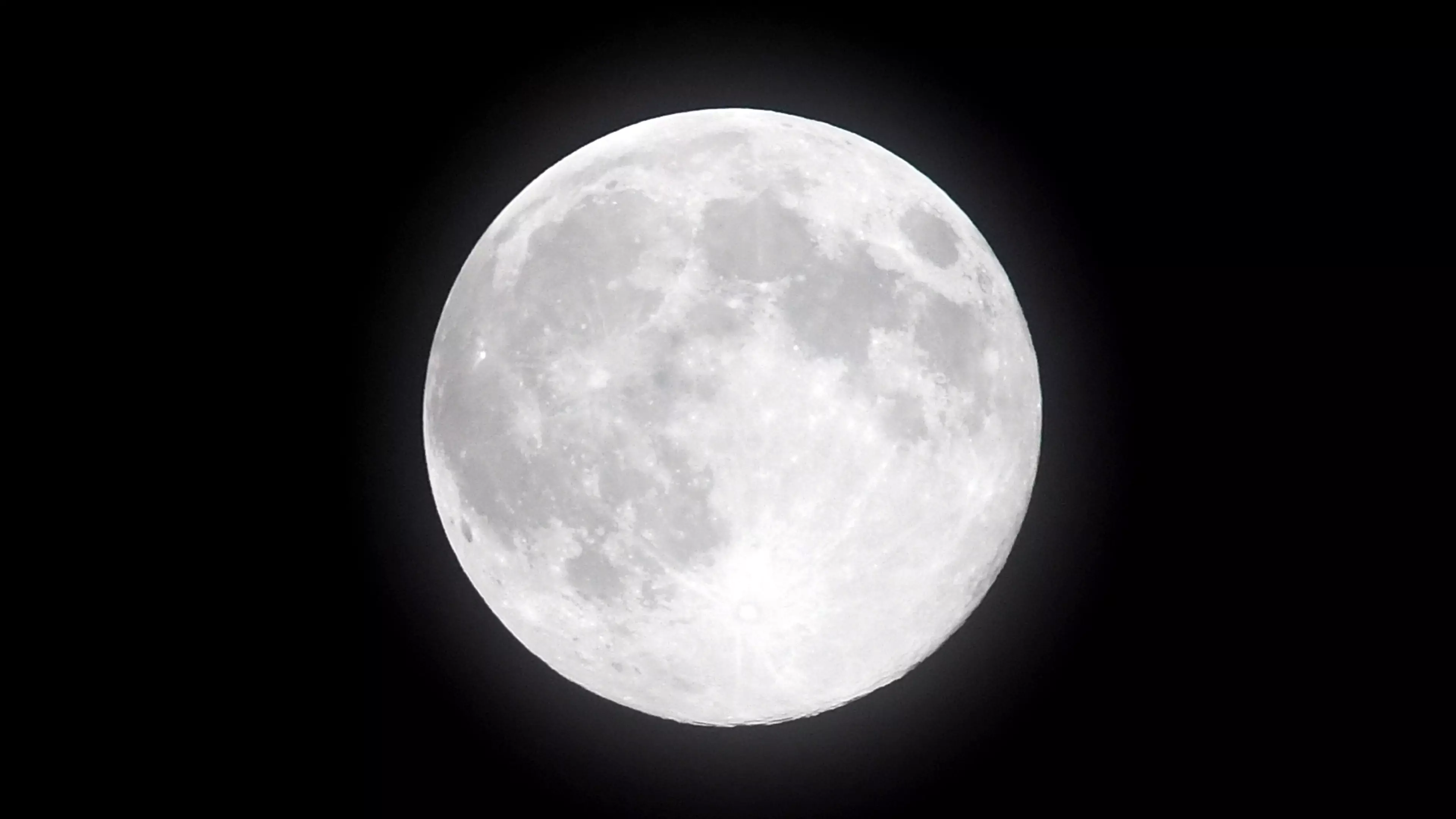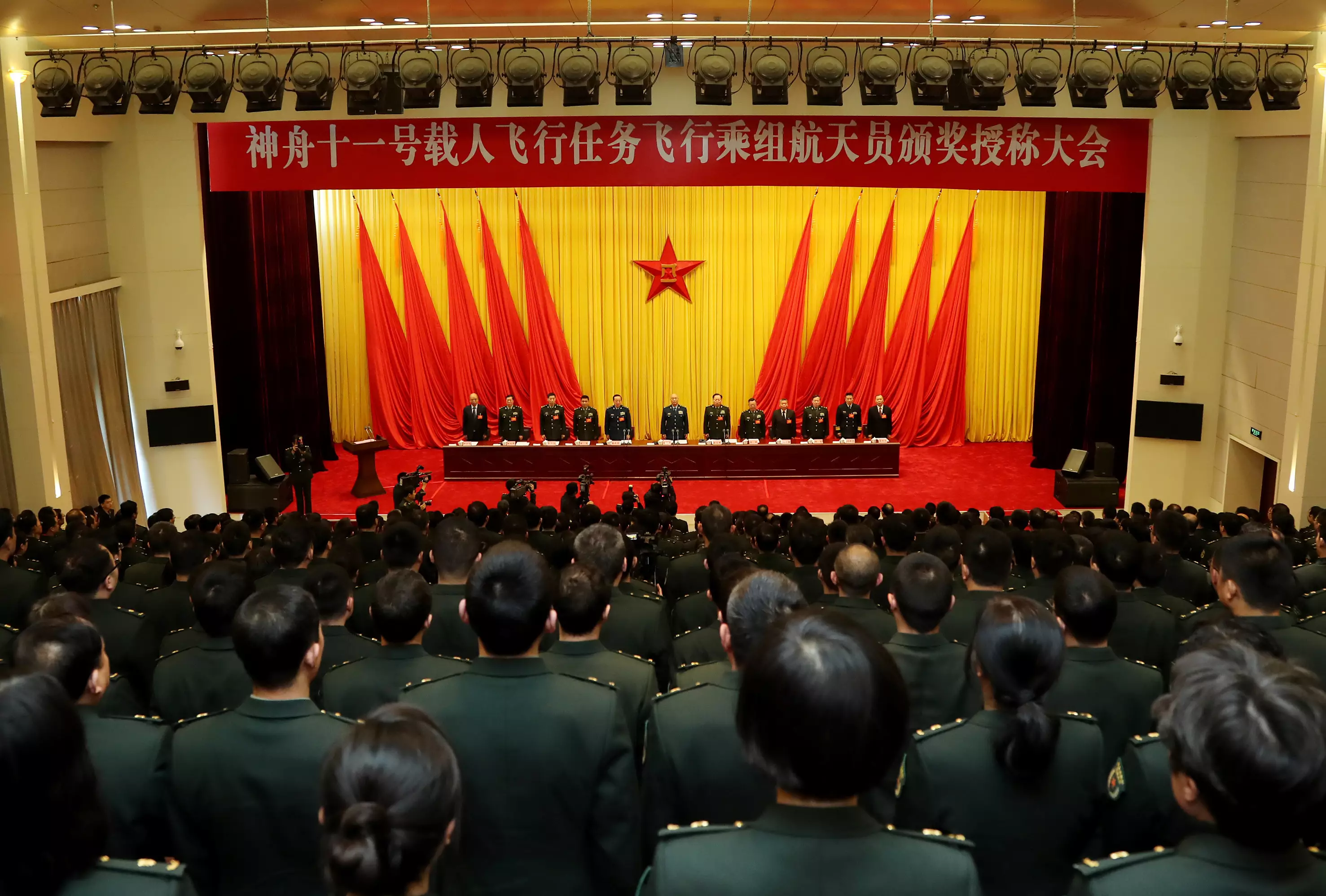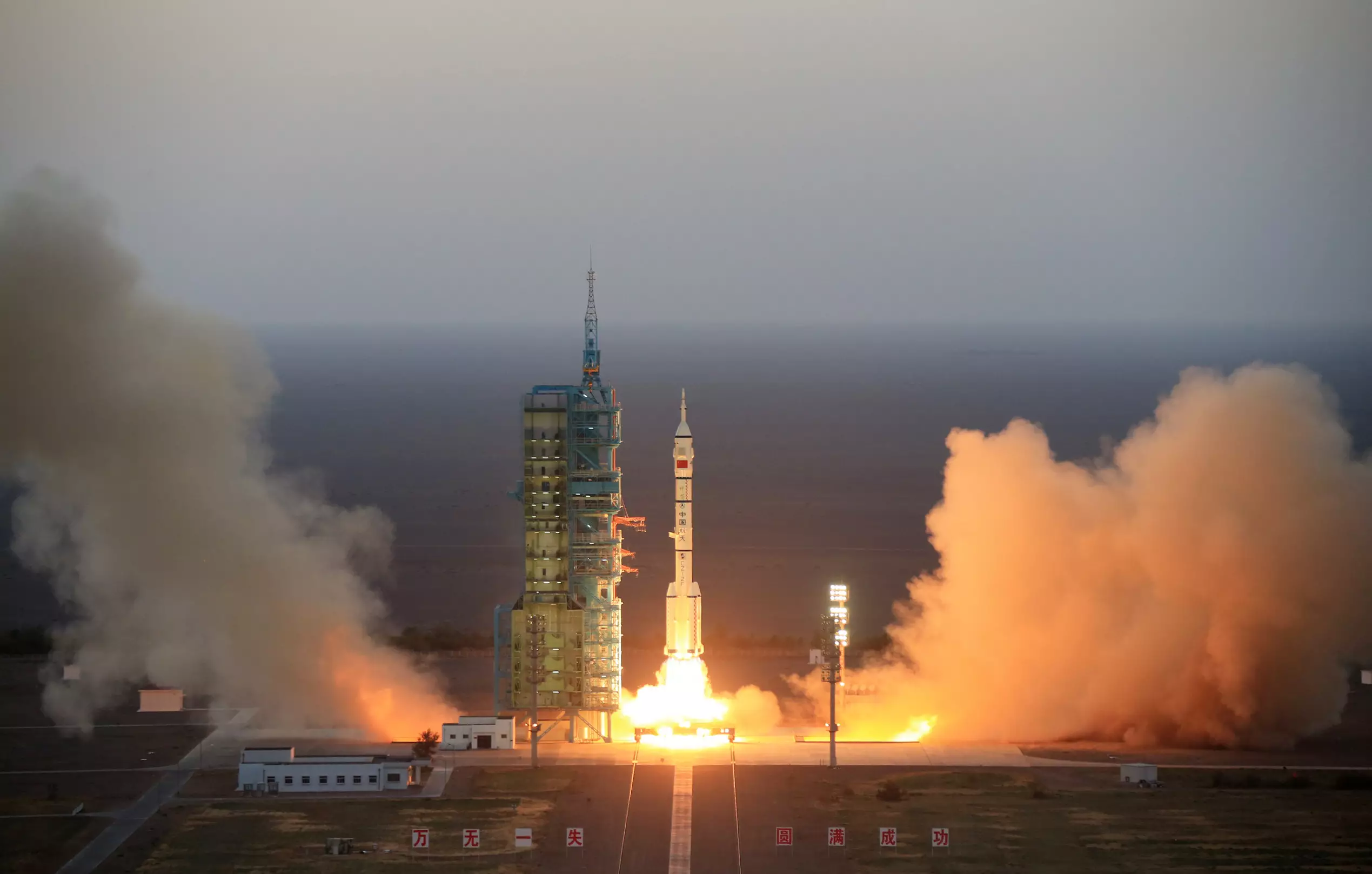
While Beijing admits it is probably a decade away from actually launching a lunar mission - the country finally has the facilities to test willing participants.
A 160-square-metre (1,720-square-foot) cabin has been constructed at the Astronautics Research University Beihang. It's called 'Yuegong-1' or 'Lunar Palace' and boasts impressive technology which simulates lunar conditions.

Credit: PA
Four Chinese students will live in the cabin for 200 days to see whether they can handle the actual conditions on the moon. State broadcaster CCTV claims this is 'the world's most advanced closed-loop life-support technology so far'.
There are facilities which take care of human waste through a bio-fermentation process and they'll be able to grow vegetables and crops.
There isn't much inside the Lunar Palace. There are four bed cubicles, a bathroom, common room, a space for raising animals and a waste-treatment room.

A ceremony honours the astronauts of China's Shenzhou-11 spaceflight mission, January 2017, Credit: PA
It's the world's third bioregenerative life-support base, but the first that can sustain animals and microorganisms.
China hopes to have its first crewed outpost by 2022. Beijing first announced its plans for a lunar mission in 2004, which consists of three phases.
The first was to get a satellite to orbit the moon, followed by sending a lander to the surface. The third phase was based around collecting samples. In late 2013, the Chinese Chang'e 3 became the first spacecraft to soft-land on the surface of the moon since 1976.

Advert
China's Shenzhou-11 spacecraft launches in October 2016, Credit: PA
But China isn't just setting its sights on the moon; it's also looking at Mars. The chief designer of the Shenzhou spacecraft, Qi Faren stated: "Carrying out space programs is not aimed at sending humans into space per se, but instead at enabling humans to work in space normally, also preparing for the future exploration of Mars, Saturn and beyond."
Wu Weiren, head designer of China's lunar missions, told the BBC: "The USA, Europe and India have all sent probes to Mars. We could have started our Mars mission earlier, but finally the country has given its approval."
At this stage, Beijing's long term goals are to improve their standing in the world of space science, to have a crewed space station and missions to the moon, and to establish a base on the moon.
Featured Image Credit: PATopics: China